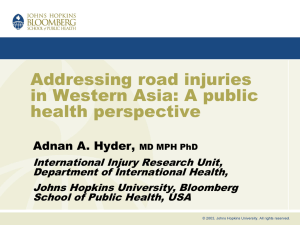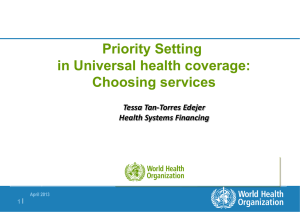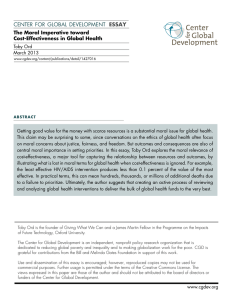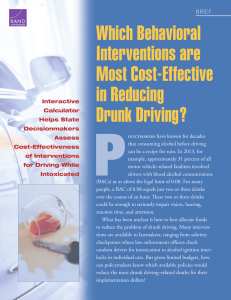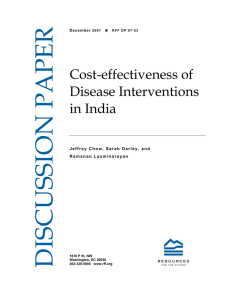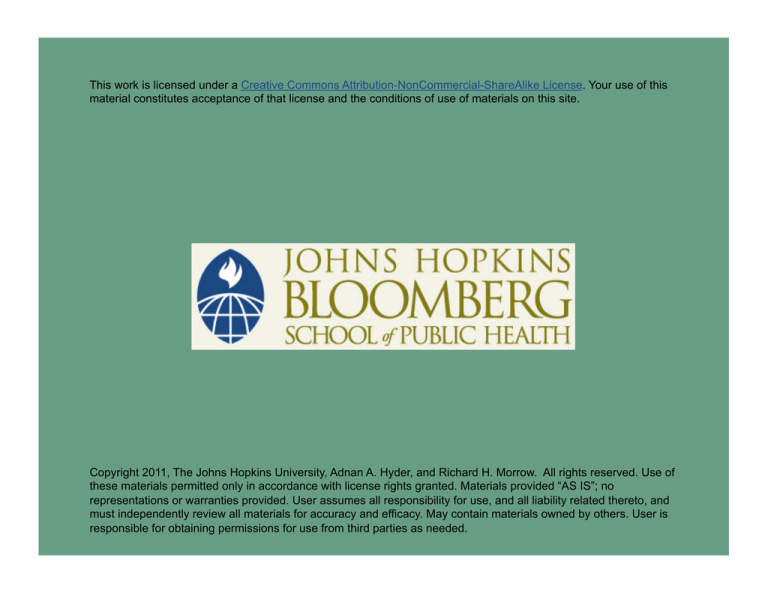
This work is licensed under a Creative Commons Attribution-NonCommercial-ShareAlike License. Your use of this
material constitutes acceptance of that license and the conditions of use of materials on this site.
Copyright 2011, The Johns Hopkins University, Adnan A. Hyder, and Richard H. Morrow. All rights reserved. Use of
these materials permitted only in accordance with license rights granted. Materials provided “AS IS”; no
representations or warranties provided. User assumes all responsibility for use, and all liability related thereto, and
must independently review all materials for accuracy and efficacy. May contain materials owned by others. User is
responsible for obtaining permissions for use from third parties as needed.
Use of SMPH for Resource Allocation:
Setting the Stage
Adnan A. Hyder, MD, PhD, MPH
Richard H. Morrow, MD, MPH
Johns Hopkins University
Learning Objectives
To understand the evidence for inappropriate allocation of health
resources
To explain the reasons for a more rational approach to resource
allocation in health
To identify approaches to allocate resources and monitor fairness
3
Section A: Problem Identification:
The Allocation Issue
Adnan A. Hyder, MD, PhD, MPH
Building a Hypothesis
Questions to the class
- Is the current allocation of resources in health acceptable? Why?
-
-
Give examples of what you think are reasonable allocations
Give examples of what you think are inappropriate types of
allocations
5
Underlying Hypothesis
“Existing allocation of resources in the health sector is inefficient
and therefore re-allocation would improve health”
Evidence?
- Many deaths of under-fives in LDCs could be averted by
interventions costing $10 or less (based on cost-effectiveness
studies), or
- Actual health expenditure averages $50,000 per death averted
(based on mortality and health sector spending)
6
Type of Allocation Problems
These allocation problems result in ...
- Inefficiencies
-
Generic definition?
Examples?
Inequalities
-
Definition?
Examples?
Why are both important?
7
Type of Allocation Problems (2)
Problem No. 1: allocative inefficiency (misallocation)
- Across sectors: health sector allocation not in proportion to
need
-
-
-
Within health: allocations to interventions (often diseasebased!) not rational
For example?
Why is this important?
8
Type of Allocation Problems (3)
Problem No. 2: technical inefficiency (use of allocated amounts)
- Public money spent on interventions of low cost-effectiveness
-
-
-
Optimal gain in healthy life for fixed costs
For example?
Why is this important?
9
Type of Allocation Problems (4)
Problem No. 3: inequalities
- Differences in measures of health across groups of people
-
-
-
The ones that concern us are “inequities”
E.g., the poor lack access to basic health care
Why are they important?
10
How Do We Address Them?
Issue No. 1: What are the health problems?
- Who is affected?
Population and denominators
How are they affected?
Burden of disease assessments
-
-
-
Measure? SMPH!
Disaggregation by groups (equity analysis)
Age, gender, SES, urban/rural …
11
How Do We Address Them? (2)
Issue No. 2: What interventions are available and at what cost?
- What is the list of interventions available today? (intervention
analysis)
-
-
-
-
What is their cost? (cost analysis)
How effective are they? (effectiveness studies)
What is the cost-effectiveness of interventions? (CEA)
Is their total cost acceptable? (Budgets)
12
How Do We Address Them? (3)
Issue No. 3: Who will do this?
- Role of the state/government
-
-
-
-
-
Role of non-profit, non-governmental sector
Role of for-profit, private sector
Role of civil society
Role of academia
Role of donors/international organizations
13
Changing Allocations
Role of the state
14
World Development Report 1993
In 1990
Health spending worldwide: $1.7 trillion
- 8% of world output
- $1.0 trillion—public sector
In Africa and Asia, $10 per person; $2,700 per person in the US
Varies within Africa
-
-
Tanzania: $4 per person
Zimbabwe: $42 per person
15
Justification of State Role
Provision of public goods—long externalities (spraying for malaria,
immunization)
Public financing of essential clinical services (highly cost-effective
to improve health of the poor)
Correct private market failures (info on cost, quality, and outcome—
regulation/increase competitiveness)
16
How Do Health Sector Reform Efforts Fare?
As a result, need to evaluate state efforts to change health systems
17






